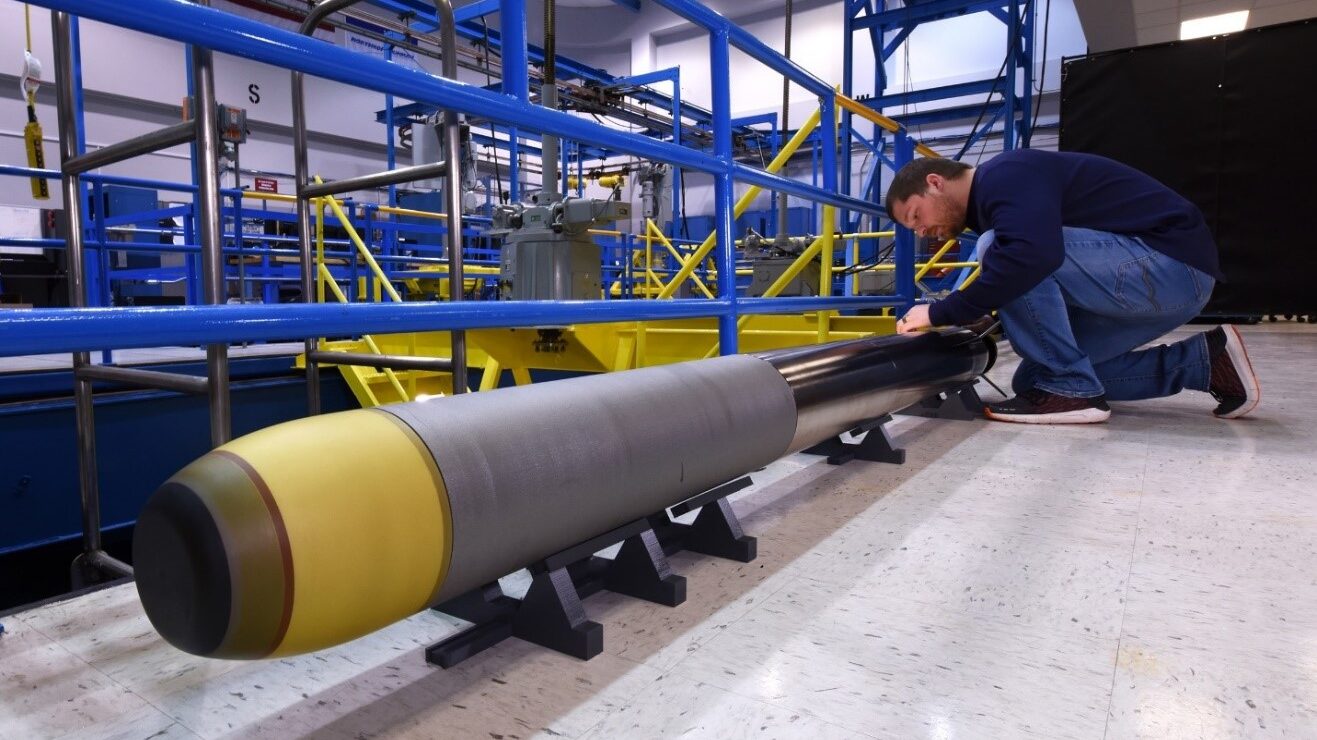
Northrop Grumman has submitted its Very Lightweight Torpedo for the Navy’s Compact Rapid Attack Weapon competition, which is due to select a winner in March 2022. (Photo courtesy of Northrop Grumman.)
WASHINGTON: The Navy is planning to award a contract in March 2022 for a new lightweight torpedo, a major milestone for the first new torpedo the service will field in over two decades.
David Portner, senior program manager for undersea weapons at Northrop Grumman, told Breaking Defense in an interview on Wednesday the consortium managing the competition published the request for proposals in October for the springtime award. Breaking Defense reported earlier this year that a congressional budget cut had forced the Navy to delay the solicitation, which was originally scheduled to be released in January 2021.
The solicitation was not made public at the time of release, but the Navy told Breaking Defense for the previous report that the competition had been postponed until the fall. A Navy spokesman did not immediately respond to questions about the solicitation for this report.
The competition is for the Compact Rapid Attack Weapon and is being managed by the Undersea Technology Innovation Consortium, a group of defense companies curated by the Navy and ranging in size from small firms to major primes. Only members of the consortium will be able to submit proposals for the torpedo competition.
One of the primary advantages of running the competition through the consortium, rather than a standard acquisition process, is the group is operated under other transaction authority, a power established and approved by Congress that enables the service to more rapidly develop and purchase worthwhile capabilities.
Portner said Northrop submitted a proposal for its Very Lightweight Torpedo in November, a weapon that has been designed and developed in partnership with Penn State. As its name suggest, Northrop’s VLWT weighs roughly 200 pounds, one third the weight a traditional 600-pound torpedo. Practically, this widens the aperture of platforms capable of employing the weapon to smaller vessels or aircraft, and it also increases the number of torpedoes that any given platform can carry.
It is not clear which companies Northrop is competing against because the Navy does not routinely disclose the names of contractors that respond to requests for proposals.
The strength of Northrop’s design, according to Portner, is the weapon’s modularity, which segregates the weapon into four compartments. This enables the company or the Navy to upgrade certain components without having to redesign the torpedo wholesale.
The technology was originally developed and marketed as the “anti-torpedo torpedo” and was installed onto five aircraft carriers. In 2018, the service canceled that program and has been working to remove ATT from its ships ever since.
GD chief says Navy’s 1 sub buy won’t impact company short term, but out years less certain
The comments from the General Dynamics chief come on the same day President Joe Biden signed the national security supplemental, which includes billions for the sub industrial base.



























